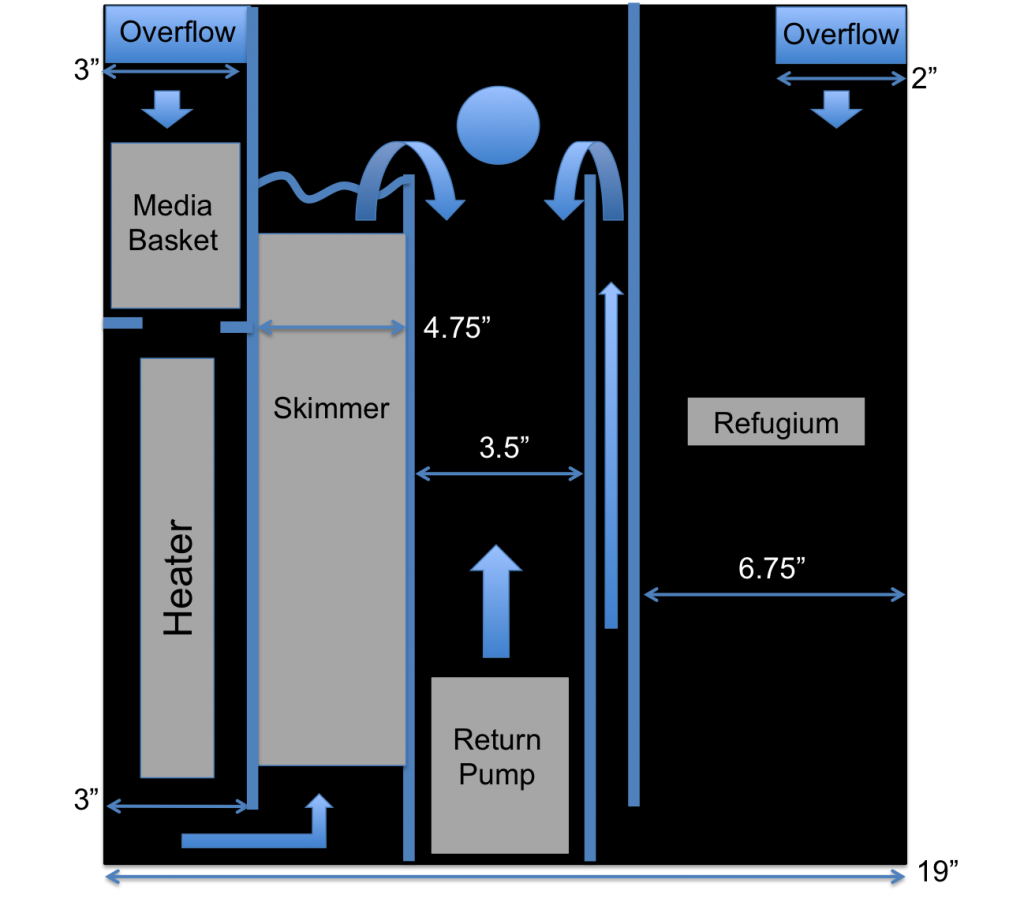FeliciaLynn
Guest
Totally feel you on the budget. I have seen them on RC at times used for about $50. Was just a thought
Good idea, I'll watch the for sale threads on N-R. I know a lot of people use this skimmer on their nano tanks.
Totally feel you on the budget. I have seen them on RC at times used for about $50. Was just a thought
Too many posts to read it all, but...DRILL IT INSTEAD
DRILL IT INSTEAD!
Drill it instead...
(Crowd chanting)

You could probably do away with your AC70. I think you get enough filtration from your LR and macroalgae. It really wouldn't be too much different than my 20L. The only thing that I run is the skimmer and a dual reactor with GFO in the first chamber and additional LR in the second chamber.Yep, that's it for filtrationAnd a big clump of macro algae in the tank.
here is my design concept. All rights reserved if anyone actually makes a commercial product out of this.

Basically it has split flow.
Refugium bottom flow helps to "flush" out pods into return pump to go back into your tank.
Refugium overflow has minimized food particles (these will usually fall "down" into refugium due to overflow turbulence/waterfall). This overflow goes to skimmer and any media filtration you may use. This helps to clean out the microscopic organic compounds and chemicals (ammonia, nitrates, phosphates, etc).
Both sections end up overflowing into the return pump section. They are set to the same height to allow balance in water return.
Here is some notes I've collected during online research. All of things you probably already listed. Just putting it here in case anyone ever Google searches for this info.
==============
So often solutions are given without any reasoning behind it. There are drawbacks to every method, you just have to decide which draw back you want to deal with.Skimmer first: The whole point of a good skimmer is to remove dissolved solids and some solids before they are broke down into base components of nitrates and phosphates. This reduces load on biological filter and removes N and P before they are present. The overflow takes surface water and feeds this dirtiest water to the skimmer. CON: A fuge needs to be fed raw water from the tank for the micro fauna and macro algae to feed off of. The skimmer removes most of this and the fuge gets under fed.Fuge first: Fuge is fed tank water where it feeds the micro fauna and macro algae. Worms and pods feed off the water and break down the waste to base components of N and P. Macro algae takes up the N and P and is removed from the sytem when harvested. CON: The whole point od a fuge is to provide habitat for a strong population of pods to grow with out predation. This populations eggs will eventually overflow and feed the coral and fish in the display tank. With the skimmer after the fuge a lot of the eggs are skimmed out and never make it to the tank. What is the point of having a fuge when you kill most of what it produces?Return last: Regardless of what is first, everything flows through the sump to the return and cycled back to the tank. A fuge is best served by low flow for the pods to grow without holding on for dear life and the time for macro to take up the N and P. The CON is that sump flow is too much for the fuge and you reduce it's effectiveness. Why not have the best fuge you can?Return in the middle: The best of both worlds. Skimmer is fed raw water as is the fuge. The flow is controlled for how much the skimmer processes and how much the fuge requires. Both get what they want. CON: You have to split the drain coming from the tank. This requires probably $10 in extra parts and 30 more minutes at most to plumb. Hard to call that a con when that is all it takes and you get a much better system.Feel free to reduce or improve the effectiveness of your system based on the limits of your individual situation.==============

I have heard people use passive bags for filtration. Rather than an actual media basket, etc.
Just buy a few mesh bags, and put some carbon inside. And you won't really need mechanical filtration since over time, your macroalgae will trap any particules you'll want to pull out.
As for GFO, I don't know if there are "large pellet" GFO, but if you are growing a LOT of macro both in tank and in the refugium, phosphate may be less of an issue???
==========
I would put the heater BELOW your media basket. Heaters are usually one of those things you "set it and forget it". The media basket you will take out more often.
It's really cool to see this design evolve! I wonder with Ron's design how much water will flow through the media bag.
I would also suggest a two stage ranco temp controller with a simple titanium heater and a small cooling fan rather than an Eheim or, heavens forbid, a Theo or Fluval heater.
I think you can live without a skimmer. You are doing fine on both your other tanks without one and unless you suddenly become a lazy slacker about maintenance and water changes I believe you'll be fine.
Again, doubt a heater is needed. What temp do you plan on running this tank at?

